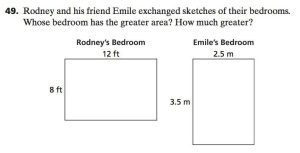So, I woke up this morning to an energetic discussion going on about an apparent chat on the state of the Math Edublogosphere (as it has come to be called by some). I prefer “math blog community”.
I read Dan Meyer’s response.
Then I read Kate Nowak’s response.
From what I can gather from the tweets and discussion, Chris Robinson was provided the energy for the sake of becoming a more cohesive community and also for the better integration of new folks.
I’ll enter into the record that I have been keeping up this blog for a bit over two years now and I wasn’t told about the discussion. So, you know, there’s that… Anyway…
Two years into this blog experiment (which I still consider an experiment), I feel like I have been welcomed especially by the aforementioned Mr. Meyer but also by Fawn Nguyen and Joseph Nebus, who have been commenting practically since the beginning and by Sam Shah whose contributions to my developing calculus course cannot possibly be overstated. I have also found that keeping a concurrent Twitter identity has helped. Ms. Nowak mentions this in her piece as well.
As I consider what I’ve gotten and contributed to the community, it is a lot easier (especially at the beginning) to take than to give. This was largely because I don’t have a very large readership and also because the community is so vast. I could spend hours chasing links from post-to-post, and blog-to-blog, taking great ideas away from each stop. The primary means of giving back is to comment on the posts that I read. I suspect that for a new person getting involved in commenting on new blogs would be very valuable as it introduces the new blogger to the authors and other commenters. It would also give them an idea of what other bloggers are doing.
But the key is to be authentic and honest. Let your readers know who you really are. Don’t try to be other bloggers. Be confident about what you can offer to the community and be honest about what you would like the community to do for you.
And give lots of shout-outs. Like I am going to do right now. These are all of the people I know personally who also blog: Tara Becker-Utess (focusing on flipped model and instructional technology), Rob Reader (who speaks directly to his students in his blog posts), Jesse Mays and Josh Greve (who are not math teachers and thus blog about other things… as if there’s anything else worth talking about…)
Linking other bloggers let others know that you are reading them, another way to introduce yourself to the community.
In the end, this community is like any other. You give, you take. Each according to his/her strength and according to his/her need. The more you interact, the more the community gets to know you, the more they fire stuff your way.




